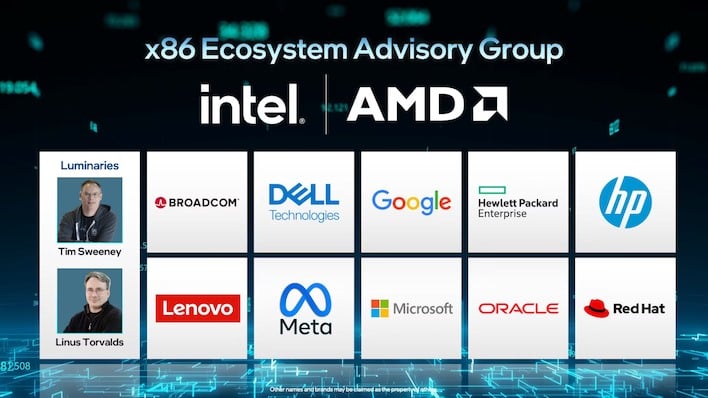
Once upon a time, there were a myriad of CPU architectures vying for dominance. Occasionally, you’d even have multiple architectures from the same vendor competing against each other. As happens in competitive environments, processor ISAs died off one-by-one until the modern day, where we basically have x86-64 for desktops, laptops, and server, Arm for mobile and low-power processors, RISC-V for open-source diehards, and then a few legacy and esoteric architectures hanging around on the periphery.
The dominant position of Intel and AMD’s bread-and-butter architecture is under siege on multiple fronts, though. RISC-V is poised to become the ISA of choice for tinkerers and learners, while Arm is making inroads in both laptops and servers. Proclamations of x86’s death are often greatly exaggerated, but there’s a very real threat here, and Intel and AMD have decided to band together to better face it.

Credit: Pat Gelsinger on X
The two companies have announced the creation of an “x86 ecosystem advisory group” that’s intended to “focus on identifying new ways to expand the x86 ecosystem.” Besides Intel and AMD, the advisory group includes a whole host of familiar names, including Dell, Lenovo, HP, Microsoft, and a couple of more surprising partners, like Broadcom, Meta, and Google. Linux creator Linus Torvalds and Unreal Engine architect Tim Sweeney have both joined the advisory group as “Luminaries”, to provide inside into Linux, game engine and development, and adjacent software.
Intel and AMD say that the advisory group will allow the chipmakers to better collaborate with their partners on the creation of future x86 products. Apparently, the x86 Ecosystem Advisory Group “will solicit technical input from the x86 hardware and software communities on essential functions and features.” The idea is to make sure that Intel and AMD are delivering processors that serve the specific needs of their customers, rather than naively following a roadmap, hoping that the new CPUs hit the mark for the market.
It’s easy to think of Intel and AMD as bitter rivals, and indeed the press release describes the two companies as “vigorous competitors.” That said, it also notes that the x86 stewards have been cooperating on the x86 ecosystem for literal decades at this point. Formalizing the collaborative environment could lead to great things for the future of the x86 ISA.